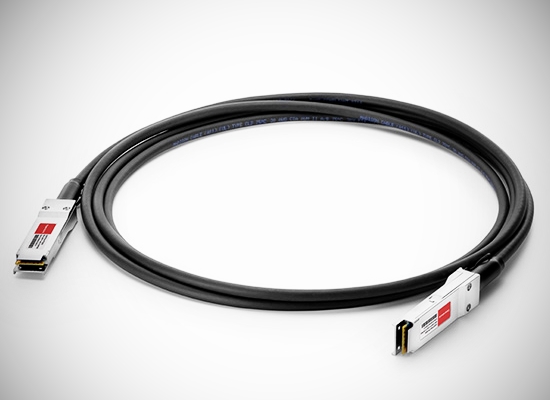December 07, 2017
DAC is the short name for direct attach cable. Currently, there are many different types of DAC
Basics on 56G QSFP+ to QSFP+ DAC Twinax Cable
The 56G QSFP+ to QSFP+ DAC
The 56G QSFP+ DAC
Specification and Features of 56G QSFP+ to QSFP+ DAC Twinax Cable
Now, many suppliers can provide 56G QSFP+ DAC
Specification
Key Features
- Lower cost than 56G QSFP+ optics and active optical cable (AOC)
- Maximum aggregate data rate: 56 Gb/s (4 x 14Gb/s)
- Compliant with Infiniband QDR/DDR/FDR data rates
- Hot-pluggable QSFP+ 38-PIN footprint
- Low Insertion Loss and power consumption
- Operating temperature range: 0 to 70°C
Summary
56G QSFP+ to QSFP+ DAC
Posted by: katherinewangfs at
03:05 AM
| Comments (7)
| Add Comment
Post contains 417 words, total size 6 kb.
December 02, 2017
We know that in the present market, there are different types of ports for switches, such as RJ45 port, SFP+ port, QSFP port and etc. Generally speaking, the more ports a switch is equipped with, the more devices the switch can be connected to. Different ports enable switches to other devices via fiber or copper. So what are the different between these ports? How should we wire them respectively? How get different ports connected? Here in this article we will mainly focus on QSFP Port and RJ45 Port.
QSFP to RJ45: What Is QSFP Port
The QSFP port is to be inserted for 40 Gbps transceiver module that offers high-density 40 Gigabit Ethernet connectivity options for data center and high-performance computing networks. The QSFP transceiver module is a hot-swappable, parallel fiber-optical module with four independent optical transmit and receive channels. These channels can terminate in another 40 Gigabit Ethernet QSFP+ transceiver, or the channels can be broken out to four separate 10 Gigabit Ethernet SFP+ transceivers. The QSFP+ transceiver module connects the electrical circuitry of the system with either a copper or an optical external network.

QSFP to RJ45:What Is RJ45 Port
Unlike QSFP, which is used to support QSFP modules. RJ45, incidentally standing for registered jack 45, is the ubiquitous Ethernet style data port found on switches, routers and network cards. The RJ45 style connectors and ports are also commonly found on Ethernet, serial and ATM IMA cards and interfaces. However, the most common use by far is with Ethernet data connections from desktop PC network cards, Wi-Fi access points, data switches and routers in home and corporate networks. For twisted pair cables like cat5, cat6 and cat7 etc, they are all with RJ45 connectors.

Solution for QSFP to RJ45
Now we know QSFP and RJ45 are different ports which can be used by different transceivers. The QSFP spec is different from RJ45 spec. The former is to be prepared for QSFP modules, while the latter is designed to support GBIC, SFP and SFP + modules. So the to connect QSFP to RJ45 port cannot be achieved directly. Good news is that currently we’ve got product like QSFP+ to 4 x 10/100/1000BASE-T (RJ45) Breakout Cable. For this breakout cable, one connector is QSFP and the other connector is 4 x RJ45, thus we can easily get a connection between QSFP and RJ45.
Posted by: katherinewangfs at
02:53 AM
| Comments (7)
| Add Comment
Post contains 402 words, total size 3 kb.
35 queries taking 0.0533 seconds, 78 records returned.
Powered by Minx 1.1.6c-pink.











